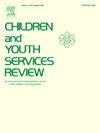The relationship between parent-child relationships and the types and transitions of mental health in Chinese early adolescents
IF 1.7
2区 社会学
Q1 FAMILY STUDIES
引用次数: 0
Abstract
This study aims to explore the transition patterns of mental health types in early adolescents in China, as well as the predictive roles of adolescent sex and parent–child relationships. The Dual-Factor Model of Mental Health provides a theoretical framework from a holistic perspective for researchers to assess individual mental health status. Accordingly, this study invited 799 early adolescents in China (425 male students; Mage = 13.05) to complete the Patient Health Questionnaire-9, Generalized Anxiety Disorder-7, Life Satisfaction Scale, and Parent-Child Closeness Scale at three time points (T1 and T2 with a six-month interval, and T2 and T3 with a one-year interval). The results showed that at all three time points, the mental health status of early adolescents in China could be categorized into three types with the same characteristics: Troubled, Vulnerable, and Complete Mental Health. Among them, Complete Mental Health had the highest stability, while Troubled had the lowest stability. Compared to female students, male students were less likely to belong to the Vulnerable category and more likely to transition from Troubled to Complete Mental Health. Harmonious parent–child relationships could reduce the probability of adolescents belonging to the Troubled and Vulnerable states and promote the transition from Troubled and Vulnerable to Complete Mental Health. However, there may be stage-specific differences in the association of father-child and mother–child relationships with the transitions of adolescent mental health types. The findings help to understand the complexity of mental health development in early adolescents in China and provide theoretical and empirical bases for guiding families and schools to take relevant measures to improve adolescents’ mental health status.
亲子关系与中国早期青少年心理健康类型及转变的关系
本研究旨在探讨中国早期青少年心理健康类型的转变模式,以及青少年性别和亲子关系的预测作用。心理健康双因素模型从整体角度为研究者评估个体心理健康状况提供了理论框架。因此,本研究邀请了799名中国早期青少年(425名男生;Mage = 13.05)在三个时间点(T1和T2间隔6个月,T2和T3间隔1年)完成患者健康问卷-9、广泛性焦虑障碍-7、生活满意度量表和亲子亲密度量表。结果表明,在这三个时间点上,中国早期青少年的心理健康状况可分为三种类型,它们具有相同的特征:困扰型、脆弱型和完全型心理健康。其中,“完整心理健康”的稳定性最高,“困扰”的稳定性最低。与女学生相比,男学生不太可能属于脆弱类别,更有可能从“有问题”过渡到“完全心理健康”。和谐的亲子关系可以降低青少年陷入问题和脆弱状态的概率,促进青少年从问题和脆弱状态向完全心理健康状态的过渡。然而,父子关系和母子关系与青少年心理健康类型转变的关联可能存在阶段性差异。研究结果有助于了解中国早期青少年心理健康发展的复杂性,为指导家庭和学校采取相关措施改善青少年心理健康状况提供理论和实证依据。
本文章由计算机程序翻译,如有差异,请以英文原文为准。
求助全文
约1分钟内获得全文
求助全文
来源期刊

Children and Youth Services Review
Multiple-
CiteScore
6.30
自引率
6.10%
发文量
303
期刊介绍:
Children and Youth Services Review is an interdisciplinary forum for critical scholarship regarding service programs for children and youth. The journal will publish full-length articles, current research and policy notes, and book reviews.
 求助内容:
求助内容: 应助结果提醒方式:
应助结果提醒方式:


